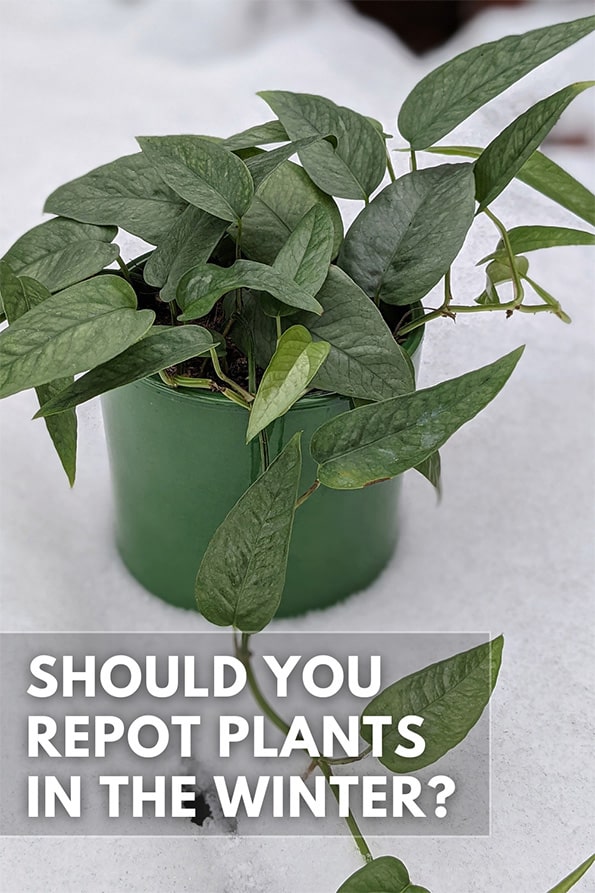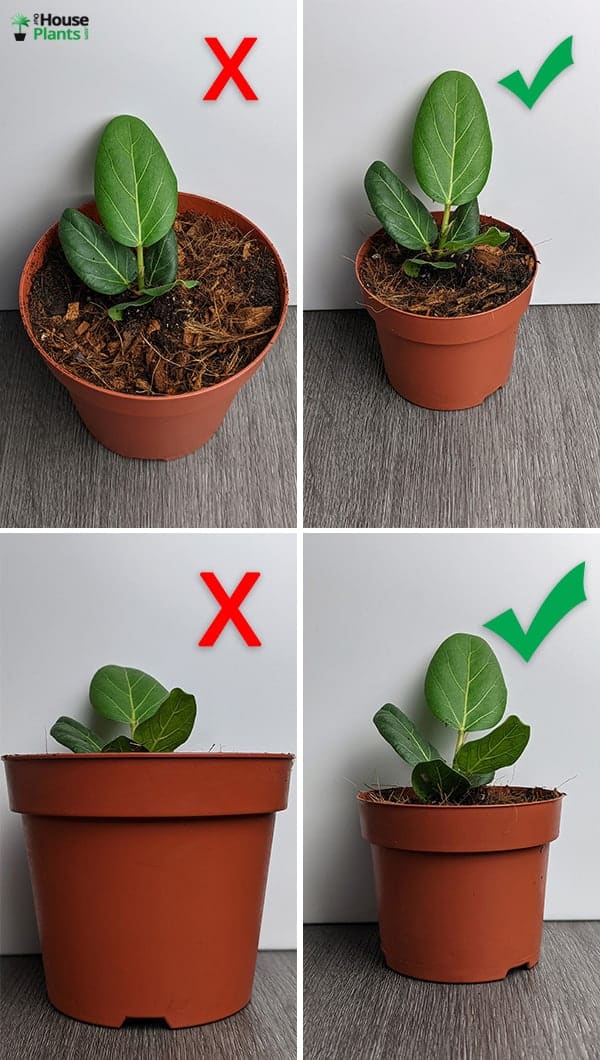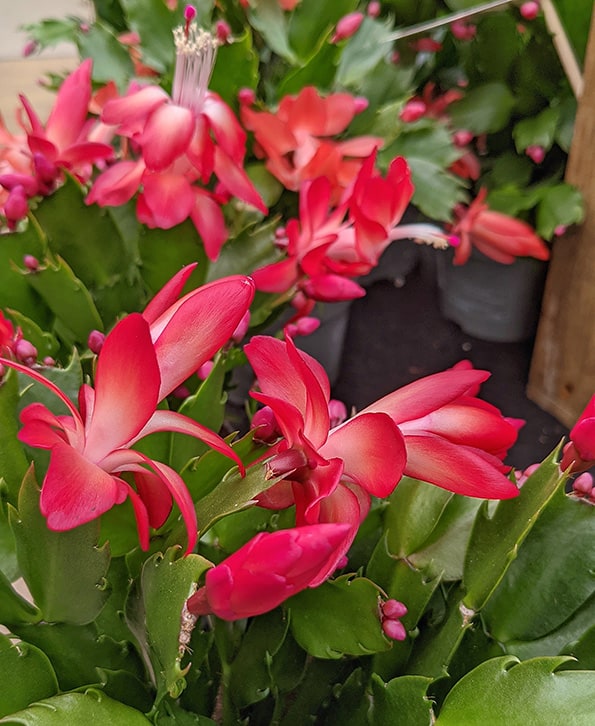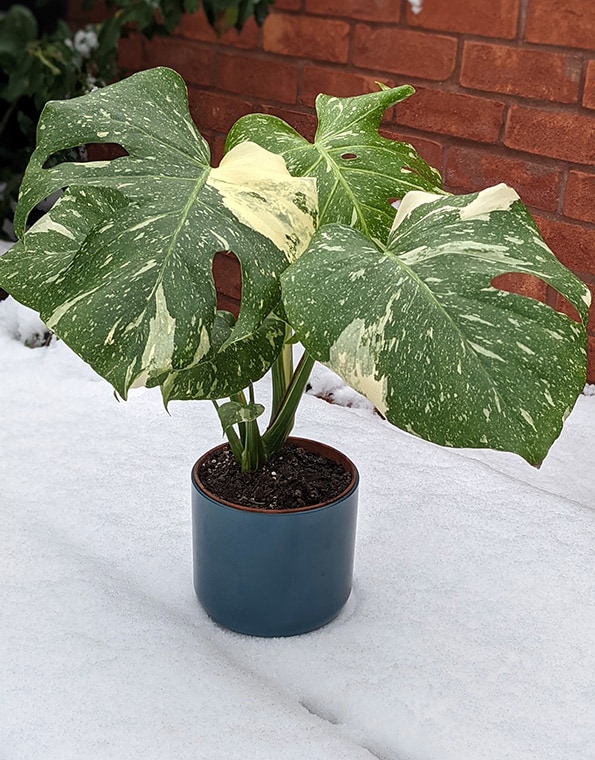By Tom Knight
"Should you repot in Winter?"
Yes, you can repot your indoor plants over the winter months. There are probably better times of the year to be doing it, but if you can't wait until early Spring and your plant desperately needs a larger pot, go for it.
Your houseplant might suffer problems, though. So this article will look at the best way to safely repot your plants and how to avoid the common issues that can come with a repot during the winter months.
Sometimes, small plants need a bigger pot to grow larger. But doing it during the colder months is not always a good idea.
The good news is that the repotting process itself is unlikely to be an issue (unless you're doing it outside in sub-zero temperatures); instead, problems typically arise a few weeks later.
Almost all issues can be avoided, though, and I'm going to list all the common mistakes and how to stop them. There are a few situations where I strongly recommend you do not repot during winter, and I'll cover these off too.
So let's get stuck in.
Contents
- Why it's fine to repot in Winter
- Why you need to be careful
- When you shouldn't repot in Winter
- Let's Sum Up
Why it's normally fine to repot in Winter
Houseplants are almost always kept indoors for a good portion of the year (the clue is in the name!), and during winter, the chances are you're keeping them cozy and snug in your home. Or at the very least, somewhere dry and away from the harsh weather.
This means a short spell out in your garden for 5 or 10 minutes whilst you change the container and potting mix is very unlikely to phase your plant. That said, you still need to minimize the time outside, especially if it's very chilly.
The Repotting Process
If you want some general guidance about repotting, such as when it needs doing or how to actually do it, I've got you covered in my repotting guide.
Personally, whenever I do it, I'll gather everything outside ready, then bring out one or two plants at a time. As soon as the repotting is done, the plant in its new container with fresh soil around its roots, it goes straight back into the house. Repeat until everything is done.
The two photos in this article of the Cebu Blue Pothos and Monstera Thai Constellation are my plants, posing for photos in the snow for this article. Both were absolutely fine with no problems. I wouldn't have risked these expensive plants if I was worried being out there would harm them.
You need to be careful with a couple of things, though and I'll cover these off next. If you "follow the rules," then your plants, like mine, should be absolutely fine. Just remember to avoid drafts, and keep in mind that plants may take longer to become established in colder temperatures.
Why you need to be careful
It's often not the time outside that causes the problems with a Winter repot, but other little mistakes with the repotting process itself.
Plant owners often slip up on the basics, and that's when the trouble starts. You may get away with it during the growing season when things are more forgiving, but in Winter, not so much.
Okay, so what do we need to watch out for?
- The container size is extra important during Winter.
You may have heard the phrase, "When repotting, go for a pot that's one size up". This is sage advice and needs to be followed at this time of the year.
It's essential for several reasons, which I'll cover now. I've also added photos of my Ficus Audrey to help illustrate what a "too large" pot and a "just right" one looks like.
In the photos below, you can see this tiny plant with it's small root ball, planted up in larger pots on the left hand side. They're huge, both in width and also depth. This means the plant roots are surrounded by massive volumes of new potting mix.
Plastic pots come in different sizes, but it's important you match the size of the pot with the plant's needs. The ones on the left are far too big.
- Big containers take longer to dry out (Temperature).
Even though the planters have drainage holes at the bottom of the pot to let excess water escape, the potting mix will still hold significantly more water than the pots shown on the right hand side.
Winter is typically colder than any time of the year, so it takes far longer for the potting mix to dry out. Extra water around the roots for long periods can easily cause overwatering issues and, if severe, will eventually encourage root rot.
A smaller container will have less potting mix and therefore store less water, so it will dry out quicker.
- Big containers take longer to dry out (Light levels).
Plants will use water in the surrounding potting mix to provide structural support and generate energy through photosynthesis. The latter only happens in the presence of light, so if there are reduced light levels because of the shorter days, there is reduced energy generation and, therefore, less need for water.
For example, I'm in the Northern Hemisphere, so in January, we get an average of 8 hours of daylight, compared to June, where we get 16 hours. The need for water at this time of year will be at least half of what is needed in June. Again this means large pots take longer to dry out, and your plant can suffer as per the problems mentioned in the previous point.
- Even plants in correctly sized planters will be effected by Temperature and Light.
You still need to be careful if you've picked a more appropriate container size. The above issues will still apply, so overwatering must be avoided for newly repotted plants, even more so over the winter.
You can offset risk by using a grow light setup (even regular LED bulbs can help with this if you do it right) and there are ways to keep the temperature warmer with various heat sources such as radiators or heat mats.
Increased light and temperature will help boost photosynthesis. Increasing the speed the potting soil dries out and, of course, helps your plants' growth rate at the same time.
- The temperature of the potting medium.
Some people store their compost or potting mixes outside. On a chilly day, this stuff is going to be super cold. You then pack it around the sensitive roots of your plant. Not a good idea unless you want to put it into shock.
As a general rule, if it's too cold for you to hold in your hand, you need to warm it up before putting it around the roots of your plant.
When you shouldn't repot in Winter
Generally, you can repot at any time over winter, and things should be perfectly fine if you can tick off all the points in the last section. However, there are a few occasions where I won't risk repotting my houseplants.
You don't always have to repot new houseplants you've just picked up from the garden center. And there are three occasions where I would never do it, especially over winter.
Fortunately, there are only three situations where I won't do it.
- Don't Repot when the plant is flowering.
Although this typically applies all year round, I'm very weary of winter repotting most flowering plants. In particular, those that tend to stop blooming or drop buds for any reason. Otherwise known as Diva Houseplants!
Usually, the flowering period is limited, and it's also often the main reason for having the plant in the home in the first place. Let's not risk losing the blooms, is my thinking here.
The repotting process is stressful for plants at any time of the year as it involves some root disturbance. Doing it over winter only adds more complexity and increases the chance of problems. Before doing this task, I always recommend waiting until after the flowers have at least finished blooming.
- Don't repot when it's uncomfortably cold for you.
Right at the start of this article, I quickly mentioned repotting in winter is usually fine unless the temperatures are approaching sub-zero. Here is my warning again but with some context.
Most houseplants are tropical plants or at least have a tropical heritage. This means they do not like freezing temperatures and will struggle being outside in cold weather. If you need to wear a thick coat to be outside, even briefly, it's too cold for your plant.
Ignore this advice, and you can expect fussy plants to drop leaves within a few days, and some won't make it. Instead, wait for a mild winter's day, or carry out the task in the comfort of your warm home.
- Don't repot if your plant is in a rest period or dormant.
Many houseplants will still produce a little new growth in Winter, especially if they're in a warm, bright location. But some plants are sensitive to light levels and know when winter has arrived. They will literally shut down, doing very little and just ticking over, known as a rest period or dormancy.
You will typically know when this has happened because the plant will not be growing new leaves, flowering, or active in any way. At this point, there is no need to repot in 90% of cases (the other 10% of cases are reserved for emergencies like tackling a destructive pest, trying to overcome root rot or perhaps rescuing an overwatered succulent that's showing issues).
Repotting a healthy but dormant potted plant at this time, provides no benefit because it isn't growing. They won't use the extra root space or the nutrients in the refreshed potting medium. Instead, doing it will just invite all the risks I've outlined previously.
Let's Sum Up
The simple answer to the question "Can I repot my plant over winter?" is yes, you absolutely can.
If you can provide artificial light and keep the growing areas warm, winter can be a great time to repot your houseplants that desperately need a new home with more space. With that extra room for the roots and the new nutrients for the plant's root system to tap into, they'll get a headstart for the coming year.
Top Tip
Many people get houseplants over the festive period, which for many falls in Winter. But you don't need to repot a plant as soon as you buy it (or get given it). Repot if you feel it's needed, otherwise hang on until Spring.
However, there are cautionary warnings you should consider, and you must make sure you follow good repotting etiquette for the best results.
Remember that repotting a houseplant can be stressful for any plant, and Winter can add further factors that need consideration. However, most can be overcome, and only a handful of situations are valid reasons to put it off until the temperature is warmer and light levels brighter.
Winter days have lower light levels and cooler temperatures which can be bad news for recently repotted houseplants. Follow the pointers I've set out, and you will help avoid problems.
Okay, so that's all I have to say about repotting houseplants in the coldest months of the year. I hope it's been helpful. Have I reassured you, or have you always repotted your indoor plants in winter months and not given it a second thought? Let me know!
About the Author
![Tom Knight Tom Knight]()
Tom Knight
Over the last 20 years, Tom has successfully owned hundreds of houseplants and is always happy to share knowledge and lend his horticulture skills to those in need. He is the leading content writer for the Ourhouseplants Team.
Also on Ourhouseplants.com
Comments




